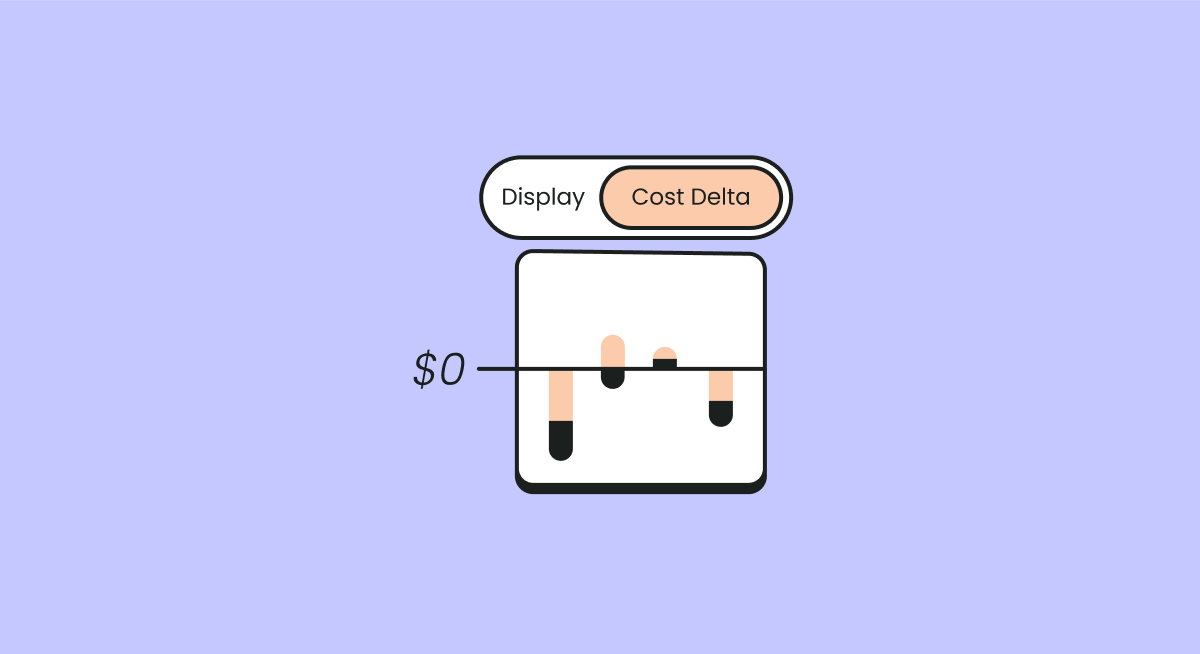
What Is AWS Budgets?
AWS Budgets is a cloud cost management tool, provided free for Amazon Web Services users, which helps users plan, track, and manage their service usage and expenses. It enables users to set custom alerts and spending thresholds based on defined budgetary parameters, ensuring visibility and control over financial outlays. This tool is useful for organizations aiming to prevent overspending and optimize resource allocation.
AWS Budgets can be tailored to the financial policies of an organization. Users can create budgets for different accounts, groups, or projects and monitor these budgets in real-time. This helps organizations maintain control over their cloud expenditures, adapt to fluctuations in spending, and adjust strategies accordingly.
This is part of a series of articles about AWS cost management.
Types of AWS Budgets
The AWS Budgets tool allows users to define the following types of budgets:
Cost Budgets
Cost budgets in AWS allow users to set spending limits based on their defined parameters. Organizations can monitor their actual costs against these predefined limits, helping to ensure financial control and prevent unexpected overages. These budgets can be detailed and segmented by factors like service, linked accounts, or tags, providing granular insights into financial allocations and usage patterns.
When defining cost budgets, alerts can be configured to notify stakeholders when spending approaches or exceeds limits, thus proactively managing costs. By reviewing these budgets regularly, companies can identify inconsistencies or spikes in spending, prompting timely investigations and adjustments.
Usage Budgets
Usage budgets focus on tracking the consumption of specific AWS resources rather than the cost. This type of budget is useful for organizations that need to maintain a close watch on how resources like EC2 instances, S3 storage, or data transfer are being used. It enables them to set thresholds for usage metrics, helping to enforce usage efficiency and prevent wastage.
With usage budgets, alerts can be configured to monitor resource consumption patterns, providing early warnings if usage exceeds set parameters. This system supports decision-makers in optimizing application architectures and adjusting workloads to remain within acceptable usage levels. Usage budgets aid in resource optimization and cost-effective utilization of AWS services.
RI Utilization Budgets
RI (reserved instance) utilization budgets help organizations maximize their investment in reserved resources. By tracking the utilization of reserved instances, these budgets ensure that purchased RIs are being fully utilized. This approach assists in optimizing cloud spending by preventing underutilization of purchased resources and by encouraging efficient use.
Setting RI utilization budgets enables organizations to get insights into their reserved resource usage trends over time. Alerts can be configured to prompt re-assessment of reserved purchases if utilization falls below a certain threshold. This results in cost savings and better alignment of reserved resource acquisition with actual needs.
RI Coverage Budgets
RI coverage budgets focus on monitoring the extent to which on-demand needs are covered by reserved instances. By evaluating the percentage of usage covered by RIs, these budgets help organizations ensure they are leveraging reserved capacity appropriately, reducing reliance on more expensive on-demand instances. Proper management of RI coverage ensures budgetary constraints are respected while maintaining application performance.
Organizations can use RI coverage budgets to identify potential gaps in coverage and make informed decisions about acquiring additional RIs or optimize existing ones. Alerts can be set to trigger when coverage drops below a desired percentage, prompting timely adjustments. This practice leads to reduced cloud expenditure and enhanced operational efficiency.
Savings Plans Utilization Budgets
Savings Plans offer flexible pricing models for AWS usage in exchange for commitments over a one- to three-year period. Utilizing budgets for these plans helps track their effectiveness and aligns usage with committed spend. Organizations can monitor their savings plan utilization, ensuring that they extract maximum value from their commitments and do not over-commit resources.
Monitoring savings plan utilization ensures that organizations get the most out of their prepaid commitments, preventing overpayment for unused services. Through regular assessment and fine-tuning, budgets can be optimized for better forecast accuracy and strategic buying decisions. Alerts notify when utilization is suboptimal, encouraging timely corrective actions.
Savings Plans Coverage Budgets
Savings Plan coverage budgets work by evaluating the percentage of eligible usage covered by savings plans. This helps organizations ensure they're maximizing the financial benefits of their savings plan investment. By monitoring the coverage levels, companies can better align their budgetary constraints with unexpected fluctuations in demand and optimize resource purchases.
Proper configuration of savings plan coverage budgets ensures resources are both cost-effective and sufficient for current usage needs. Alerts can prompt analysis when coverage dips below a target, allowing adjustments to maintain cost efficiency and performance.
Adopting FinOps Practices in AWS Budget Planning
When using AWS Budgets and related tools to manage cloud expenditure, adopting AWS FinOps practices brings several benefits. The most important is enhancing financial accountability—a FinOps framework enables organizations to create a culture where finance, operations, and development teams collaborate on cost-related issues, fostering better decision-making around cloud expenditures. By aligning financial goals with technical needs, FinOps allows for real-time visibility into cloud spending, promoting transparency and better cost optimization.
FinOps encourages cost-awareness across teams and departments, driving proactive measures to prevent overspending and enabling organizations to adjust their strategies as usage or business needs change. This approach helps reduce inefficiencies, achieve predictable spending, and better forecast future cloud costs, ultimately leading to better financial management in a dynamic cloud environment.
Here are a few ways you can incorporate a FinOps mindset into your AWS budgeting activity:
Creating a FinOps Culture
Building a FinOps culture involves breaking down silos between finance and technical teams. This culture requires collaboration and continuous communication to ensure all stakeholders understand cloud spending and are aligned with the organization’s financial goals. Developing shared cost metrics, setting KPIs, and regularly reviewing cloud expenditures help in creating a data-driven approach to cloud cost management.
In a strong FinOps culture, cloud spending is treated as a shared responsibility, where engineering teams are incentivized to optimize resource usage while meeting performance goals. Regular training on AWS cost management tools and practices, along with fostering transparency in cloud costs, further strengthens this culture, ensuring all teams are focused on efficient resource utilization and financial accountability.
Financial Planning
Financial planning within the FinOps framework focuses on predicting and controlling cloud expenditures in alignment with organizational budgets. This process involves setting clear budgetary goals, forecasting future cloud costs based on historical data and current usage patterns, and continuously refining those forecasts to reflect changing business needs. AWS Budgets plays a crucial role in tracking these financial plans, providing real-time visibility into whether the organization is on track with its spending targets.
By integrating AWS Budgets with financial planning, organizations can make data-driven decisions on resource provisioning and commitments, such as deciding when to invest in Reserved Instances or Savings Plans. Accurate financial planning allows for better allocation of cloud resources, minimizing wastage while maintaining operational efficiency.
Cost Allocation
Cost allocation is the practice of assigning cloud spending to specific departments, projects, or teams to ensure transparency and accountability. AWS Budgets, in conjunction with AWS cost allocation tags, enable detailed tracking of resource usage and its associated costs across the organization. This granularity helps identify which teams or projects are responsible for certain expenses, allowing organizations to track spending more effectively.
With clear cost allocation, organizations can ensure that cloud resources are used efficiently and align spending with business goals. This approach enables decision-makers to optimize resources based on actual usage data and make informed adjustments to future cloud investments, improving overall cost efficiency.
Governance
Governance in AWS cost management focuses on setting policies, procedures, and controls to manage and optimize cloud spending. FinOps practices reinforce governance by establishing frameworks for monitoring cloud usage, enforcing budgetary constraints, and ensuring that spending aligns with organizational objectives. AWS Budgets play a key role by allowing organizations to set up spending limits, receive alerts when budgets are exceeded, and make informed decisions to stay within financial boundaries.
Effective governance ensures that teams adhere to budget policies, minimize financial risks, and promote accountability. Regular audits and reviews of cloud spending, combined with the use of tools like AWS Budgets, help enforce governance and provide visibility into cloud resource consumption, fostering a culture of financial responsibility.
Tutorial: Getting Started with AWS Budgets
Creating a Budget
Login into to AWS Console and navigate to the Budgets screen:
To create a budget in AWS Budgets, click the Create Budget button at the top of the page. The following page appears, which allows you to create a budget:
For a simplified setup, choose the Use a template (simplified) option under Budget setup. AWS offers several predefined templates, including:
- Zero spend budget: Notifies you when your spending exceeds AWS Free Tier limits.
- Monthly cost budget: Alerts you if your monthly expenses exceed or are forecasted to exceed a specified amount.
- Daily savings plans coverage budget: Monitors the coverage of your savings plans and alerts you when coverage falls below a target threshold.
- Daily reservation utilization budget: Tracks the utilization of reserved instances and alerts you when utilization is low.
After selecting a template, you can update the details and settings to match your specific requirements.
While the templates come with default configurations, you can later modify settings like linked accounts or cost categories using the advanced workflow by choosing the Custom option under Template settings.
Additionally, templates can be downloaded for offline use in AWS CLI or CloudFormation by selecting the JSON option.
Once all configurations are set, click on Create budget to finalize the process.
Viewing Your Budgets
To monitor the state of your budgets, visit the Budgets Overview page in the AWS Cost Management console.
Here, your budgets are displayed in a filterable table, showing key data such as:
- Current costs and usage incurred during the budget period.
- Budgeted costs or usage for the budget period.
- Forecasted usage or costs for the budget period.
- Percentage comparisons of actual versus budgeted and forecasted amounts.
To dive deeper into a specific budget, click on its name. This opens a detailed view where you can explore several key metrics:
- Current vs. budgeted: A comparison of your current incurred costs against your budgeted amount.
- Forecasted vs. budgeted: A projection of future costs compared to your budgeted amount.
- Alerts: Notifications about the status of your budget, including any thresholds that have been exceeded.
- Details: Information about the budget amount, type, time period, and additional parameters.
- Budget history: A chart and table showing the historical data of your budget, with quarterly or monthly views depending on the budget type.
If needed, you can also download the budget data as a CSV file for offline analysis. To do this, go to the Budget history tab and choose Download as CSV.
Best Practices for AWS Budgets
Using Managed Policies
Managed policies in AWS Budgets define permissions for access and control, essential for secure budget management. Implementing these policies ensures that users have appropriate access levels to create, modify, or view budgets. Establish clear roles and permissions, minimizing the risk of unauthorized access and modification.
Regular reviews of managed policies ensure they align with organizational changes and evolving security policies. This practice maintains a secure budgeting environment while enabling flexibility to accommodate new resources and services.
Using Amazon EC2 Auto Scaling
EC2 Auto Scaling automatically adjusts compute resources based on needs, which can aid budget management. By automatically scaling up or down, organizations can ensure that usage and costs remain within predefined budget parameters, avoiding overspending due to improper resource allocation.
Integrating EC2 Auto Scaling with AWS Budgets allows dynamic adjustment of resources, optimizing cost-efficiency and maintaining performance. This approach decreases waste and improves service delivery, aligning cloud operations with financial goals.
Controlling Access to AWS Budgets
Controlling access to AWS Budgets is fundamental for maintaining budget integrity and security. Using AWS Identity and Access Management (IAM), organizations can assign granular permissions, ensuring that only authorized personnel can create, modify, or view budget settings.
This approach minimizes unauthorized changes and helps enforce organizational policies. Regular audits of access controls are essential to adapt to infrastructure changes or policy adjustments, ensuring ongoing compliance. Securing access to budgeting information is critical to prevent errors and protect sensitive financial data.
Budget Alerts Configuration
Configuring budget alerts is crucial for real-time monitoring and proactive budget management. Alerts notify stakeholders when spending approaches or surpasses defined thresholds, enabling timely action to prevent budget overruns. Customize alerts based on roles or project needs to ensure effective communication.
Review and adjust alert settings regularly to reflect changing business objectives or spending patterns. This adaptability ensures that budget alerts remain relevant and actionable, contributing to better-informed decision-making and financial accountability across the organization.
Tagging for Governance and Security
Tagging in AWS allows users to classify resources, aiding in budget governance and security enforcement. Proper tagging practices help track resource usage across different departments, projects, or cost centers, enabling detailed reporting and more strategic budget planning.
Establish a consistent tagging policy, reviewed regularly to align with business changes. Effective tagging helps in associating costs with business functions, providing insights for cost optimization and strategic resource allocation. It enhances governance and strengthens financial control.
Taking AWS Budgets to the Next Level with Finout
Taking AWS Budgets to the next level with Finout means leveraging powerful tools like MegaBill and Virtual Tagging to gain unparalleled control over your cloud costs. Finout's MegaBill consolidates all your AWS accounts and services into a single, easy-to-navigate bill, making it simple to track and analyze costs across teams and departments. Combined with our Virtual Tagging feature, which allows you to tag resources on the fly without any changes to your AWS environment, you can achieve real-time, granular cost visibility and management tailored to your exact business needs. These capabilities allow enterprises to allocate budgets more effectively and ensure no cost goes unnoticed.
On top of this, Finout’s new Financial Plans solution revolutionizes AWS budget management by offering an intuitive way to plan, forecast, and monitor costs at scale. Unlike traditional AWS Budgets, which focus on past spending, Finout’s planning tool enables businesses to proactively set and adjust budgets based on future goals, not just historical data. With built-in anomaly detection and simplified reporting, teams can avoid budget overruns and make confident, informed decisions about their AWS spend. Finout empowers organizations to stay ahead of cloud costs, allowing them to focus on growth and innovation.









